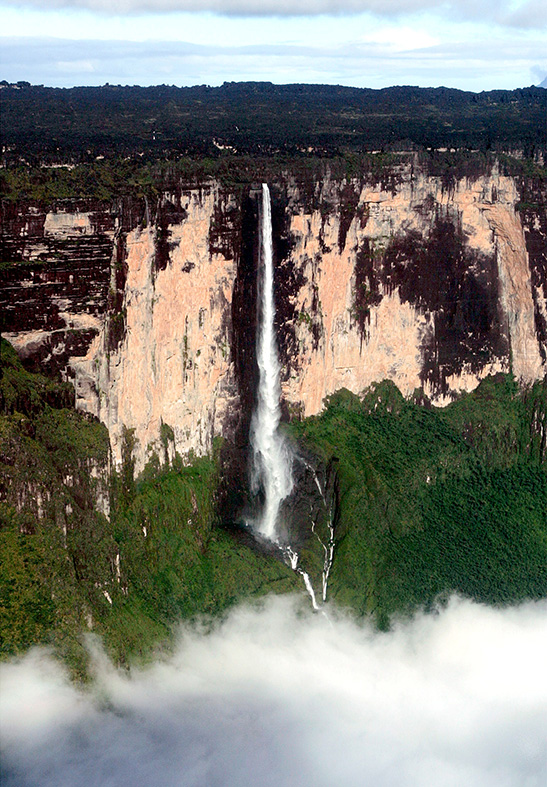Mount Roraima: Tourists endanger ecosystem of Venezuela's flat-topped 'Lost World' mountain
A mysterious table-topped mountain that perplexed 19th-century explorers is attracting more and more tourists – far too many, according to some locals.
First described by English explorer Sir Walter Raleigh in 1596, Mount Roraima, on the border between Venezuela, Brazil and Guyana, inspired Sir Arthur Conan Doyle's classic 1912 novel, The Lost World. The unusual geologic formation also inspired 2009 Disney/Pixar animated movie Up.
The table-top mountains of this region are some of the oldest geological formations on Earth, dating back to the Precambrian era, two billion years ago.



Several thousand hikers a year now make the three-day trek across savannah, through rivers, under a waterfall and along a narrow path to scale the cliffs of Mount Roraima.
While the mountain's popularity is a boon to Venezuela's struggling tourism industry, tourists often leave the prehistoric landscape scattered with unwanted litter and put strain on a delicate ecosystem.


Roraima is sacred ground for the indigenous Pemon people and a spiritual symbol for many other Venezuelans. "It used to be more solitary and inhospitable," recalled Felix Medina, a 59-year-old guide who has been taking people up the mountain for more than a decade. "I still love it, but there are too many people. It's chaotic sometimes."
Between 3,000 and 4,000 people climb Roraima each year, up from hundreds a few years ago. That creates queues during peak times over Christmas and Easter, and sometimes leaves the few sheltered coves at the top crammed with tents.
Helicopters bring wealthy foreign tourists, especially from Japan, to the summit.


Standing at more than 2,800m (9,200ft) above sea level, its summit area consists of 400m high cliffs on all sides.
In Pemon language, the flat-topped mountains across south-eastern Venezuela are known as "tepuis", which means "houses of the gods". Standing majestically next to Roraima is Kukenan, another tepui, infamous among the Pemons for ancestors who jumped off and committed suicide there.
The Pemon believe Mount Roraima is the stump of a mighty tree that once held all the fruits of the world. Felled by a trickster named Makunaima, the tree crashed to the ground, unleashing a terrible flood.





Today's travellers can see black frogs, dragonflies and tarantulas that are unique to Roraima, plus a range of endemic plants clinging to cracks and crevasses. It is also an ornithologist's paradise.
Some environmentalists have called on the government, tour operators and local Pemon leaders to limit the number of tourists to a few dozen per day. They would also like to see a stricter application of rules to ensure they carry every last shred of waste down with them.
© Copyright IBTimes 2025. All rights reserved.






















